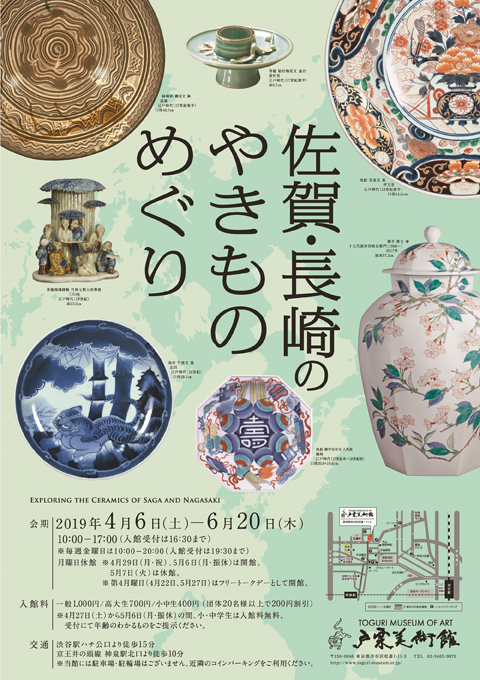The part of Kyushu that is now Saga Prefecture and a portion of Nagasaki Prefecture was known during the Edo period as the province of Hizen. It was a famous area for ceramics. While there was no significant production before the middle ages, the situation changed suddenly at the end the 16th century. Ceramic artisans came to Japan from the Korean peninsula and set up kilns, beginning with the production of earthenware pottery known as Karatsu ware because it was produced in and around Karatsu, in what is now Saga Prefecture. Very soon, the technology spread all over northern Kyushu. A notable example is the town of Takeo, also in Saga Prefecture; the earthenware pottery made there during the Edo period is now known as Ko-Dakeo, meaning old Takeo ware. This sort of earthenware was also made in Arita, which was then part of the Saga Nabeshima domain, and it was in Arita, in the early 17th century, that potters succeeded in making the first domestic porcelain in Japan. It was called Imari ware, taking its name from the port from which it was shipped. Boasting colorful decorations on a beautiful white porcelain base, Imari ware quickly gained favor in both Japan and overseas. Porcelain operations spread beyond Arita to neighboring towns, including Takeo and Ureshino, allowing for large volumes of porcelain production. Later, in the second half of the 17th century, the Saga Nabeshima domain built upon the technology of Imari ware to begin production of a particularly fine and beautiful type of porcelain known as Nabeshima ware, intended as gifts of tribute to the Tokugawa Shogunate. Soon after the emergence of Japan’s first domestic porcelain in Arita, porcelain production also began in what is now Nagasaki Prefecture, in Hasami, then part of the Omura domain, and Mikawachi, then part of the Hirado domain. Thus, it was within a very brief span of time that the province of Hizen emerged as a major force in porcelain production, a legacy that continues to this very day.
In this exhibition, we bring together from our collection a special selection of Edo-era Imari ware and modern-day Arita products, along with stunning examples of Ko-Dakeo and Nabeshima and Shida ware and ceramics from Hasami and Mikawachi. We hope you will enjoy this opportunity to tour, all at one time, the rich variety in this region’s ceramics.
